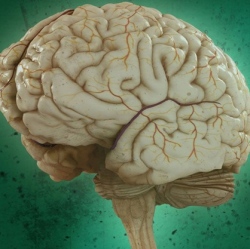
Back in September, researchers here in the UK discovered that brain disorders such as Alzheimer’s may be transmissible through certain medical procedures. Sceptical scientists urged caution, but now a different set of autopsy results have shown the same thing.
As reported in Nature News, the latest autopsies were performed on the brains of patients who died of Creutzfeldt–Jakob disease (CJD), a rare brain-wasting disorder. Many years earlier, these individuals had received surgical grafts of dura mater, a membrane that covers the brain and spinal cord, prepared from human cadavers. Regrettably, these grafts that were contaminated with the prion protein responsible for CJD.
Five of the seven brains analysed also showed signs of Alzheimer’s disease. This was odd because the individuals, age 28 to 63, were too young to have developed the amayoid plaques indicative of the neurological disorder (amyloid plaques are a misfolded protein that fuels the spread of Alzheimer’s).
Analysis of a control group failed to show signs of this wasting signature. This suggests that that the “seeds” of certain neurological diseases can be transmitted during certain medical procedures, or even through contaminated surgical instruments. The new report, written by researchers from Switzerland and Austria, can now be found in Swiss Medical Weekly.
Back in September, a different research team discovered something very similar. While performing an autopsy on eight CJD patients, University of College London researchers found that four of them exhibited similar vascular amyloid beta pathology. Alarmingly, all of these patients, most of whom were quite young when they died, caught their CJD from a growth hormone derived from the pituitary glands of human cadavers, some of which were contaminated with prions.
Importantly, neither study suggests that Alzheimer’s can be transmitted through normal physical contact. Also, cadaver-derived human growth hormone (HGH) isn’t used any more, as it’s been replaced by synthetics. But scientists are now seriously worried that “amyloid seeding” is actually a thing. Nature News reports:
[If true] it would have important clinical implications. In general surgery, for example, any amyloid-β proteins, which are very sticky, would not be routinely removed from surgical instruments; standard sterilization procedures cannot shift them.
“It is our job as doctors to see in advance what might become a problem in the clinic,” says neuropathologist Herbert Budka of the University Hospital Zurich, Switzerland, who is a co-author of the latest paper.
This theory will require more proof if it’s to be accepted by the scientific community. Both studies are purely observational, and both were performed on a limited sample of subjects. Moreover, neither study proves that the deposits of amyloid beta were actually caused by the contaminated dura mater or hormone injections.
But these finding, though preliminary, are nonetheless disturbing. It shows we still have lots to learn about neurodegnerative disorders and the ways in which seeds of amyloid beta proteins can be transmitted. And if this theory is ultimately proven to be true, it will put even more pressure on health care providers to provide a clean and safe environment for its patients. It’s a terrifying thought.
